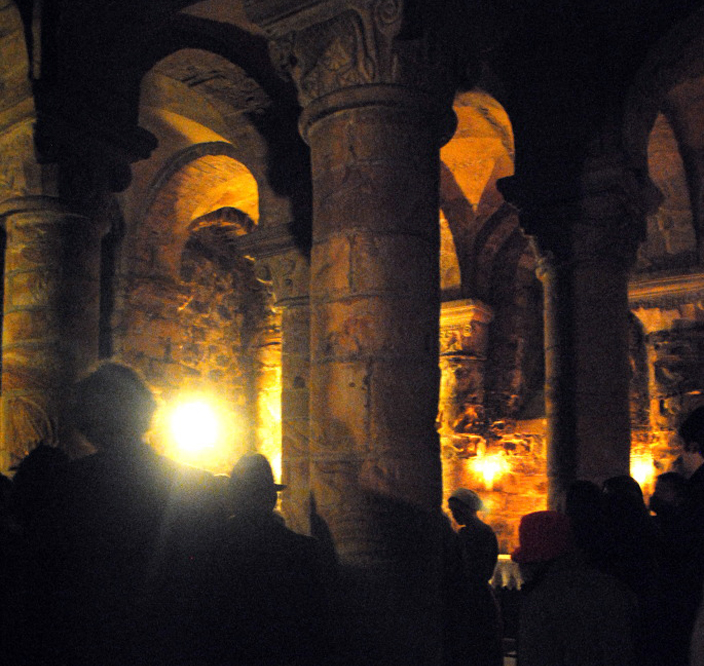
The Norman Chapel, built around 1080, is the oldest building surviving in Durham, and among the most atmospheric. It is currently undergoing major conservation to dry out the fabric.
The Norman Chapel is among Durham Castle’s most important spaces and, constructed around 1080, the city’s oldest building.
Although it has been sometimes taken for the undercroft, (the space under a church or chapel) rather than the chapel itself, close reading of the sources suggests that this was probably the main chapel and not a crypt or utilitarian space associated with it.
The chapel features an unusual array of carvings, some thought to depict religious scenes and values, others being simply decorative.
One of its capitals depicts a man with two dogs hunting a stag. It is thought that this is a representation of St Eustace, who is said to have converted to Christianity when he saw an apparition of Jesus appear between the horns of a stag he was hunting. Eustace subsequently faced many misfortunes but clung onto his faith. He and his family were later killed by the Emperor Hadrian for refusing to make pagan sacrifices and he became the patron saint of anybody facing adversity.
There is also a representation of a mermaid (which sometimes symbolised temptation) and of two leopards.
The chapel has survived remarkably well for a building of its age. Perhaps the most surprising thing about it is that it has survived practically intact - religious spaces such as this, being very important, were often remodelled to reflect changes in fashion.
The Chapel probably owes its survival to the fact that it was rendered inaccessible in the 14th century when Bishop Hatfield enlarged the Castle keep, saving this Norman structure from substantial medieval and post-medieval alterations.

The squarish space of the Norman Chapel lends itself to a variety of uses. Still used as a place of worship, it is also a popular venue for performances and concerts where an intimate historic setting is desirable. Here, in the shadows, audience members watch “1072”, a Durham Student Theatre performance about the World Heritage Site.

